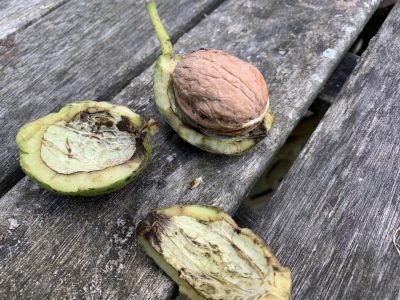FRUITFUL FUTURES
Making the Best of It
Eek! Mice (or rabbits)! Not the animals but the damage they have wrought. The bark on virtually all my pear grafts of last year has been nibbled off enough to kill the grafts.
Once I calmed down, I realized that all was not lost. All the chewing was above ground level, leaving a small amount of intact bark still in place. The plants aren’t dead, just their portions above the chewing. The near-ground portions could be grafted again.
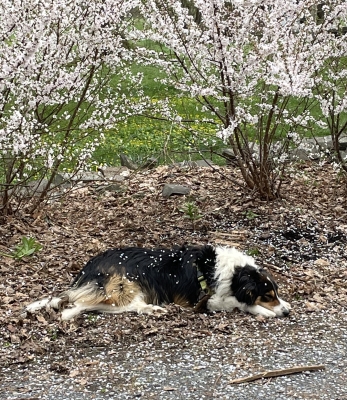
Daisy showered with petals (more on this later)
(Most fruit trees neither come true from seed nor root readily from cuttings, so are propagated by grafting a scion — a short length of one-year-old stem — of the desired variety onto a rootstock. The rootstock is the same kind of plant as the scion variety and could be a seedling or a variety developed for special rootstock purposes. My nibbled trees are pear trees, Highland, Blake’s Pride, and other varieties, each grafted on a rootstock named Old Home X Farmingdale 87, which dwarfs the trees’ final height to about half that of a full-size pear tree, as well as induces it to yield its first fruits sooner.)
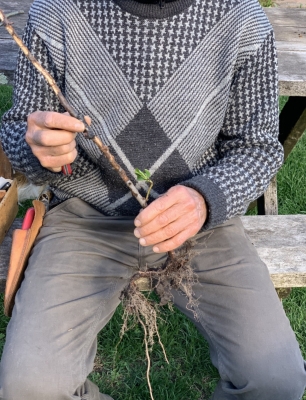
Damaged rootstock
Crouched way down at ground level would be a tough position for grafting, not to mention trying to keep dirt and debris off the cut surfaces. So I dug up each plant for “bench grafting,” so named because it’s done at a bench or, more generally, upright and in the comfort and better light of indoors.
My graft of choice for these wounded plants is the whip graft. It’s a simple graft, especially for apple and pear; I typically expect 95+ percent “takes.” With a well-honed, preferably straight-edged (and preferably single-bevelled) knife, I make a smooth, sloping cut about 3/4-inch long on the rootstock. Typically, I would make the cut longer but there’s not that much viable stem above-ground.

Making the cuts on rootstock and scion
Next, I take a scion of similar thickness to the rootstock, although this is not all-important, and make a similarly smooth, sloping 3/4-inch long cut.
If the cuts are secured face to face and then sealed against moisture loss, cells at the cuts start to multiply, eventually knitting the two pieces together and joining their vascular tissue. If the two plant pieces are not matching in thickness, success can still be achieved if just one side of the two of them is aligned. A piece of rubber, either a cut open rubber band or a bona fide grafting rubber, keeps cut edges of scion and rootstock intimate, and then the wound is sealed with Tree-Kote or similar tree wound material, or Parafilm tape.


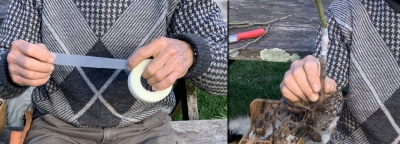
Sealing the graft with Parafilm
Keeping the roots moist and the plants indoors for a couple of weeks speeds growth of new cells. After that, the plants will go outdoors, either potted up or planted in the ground.
The Downside to Low Grafting
Grafting so low on the plant does have its downsides. For one thing, a certain amount of rootstock stem above ground level is needed for the dwarfing effect. For full effect, grafts are usually made 6 to 12 inches above ground level.
Also, if a graft is very low on a plant so that over the years it gets covered with soil, the scion is could eventually root. At which point the dwarfing and other benefits of the rootstock are lost.
On the plus side, if any of my grafts fail, the still viable rootstock will undoubtedly send up a new shoot, which can be grafted next spring — and done well above ground level.
So How Do You Get a Rootstock?
The way to get a rootstock is to buy one (ha, ha). But how does as nursery make, for instance, an Old Home X Farmingdale 87 pear rootstock if pears (and most other tree fruits) are so hard to root and don’t come true from seed.
Rootstocks are bred or selected to impart special characteristics to the tree for which they provide roots and a short length of stem — very short stems in the case of this week’s pear grafts. Another characteristic that might be sought in a rootstock is ease of propagation, perhaps even by cuttings.
Whereas a pear variety such as Blake’s Pride is propagated from mature, fruiting wood, a rootstock might be propagated from juvenile wood, that is, wood that that has never grow to maturity. All plants are easier to multiply from juvenile wood. Near the base of a plant that has been raised from seed, the wood retains its juvenility, so a seed-propagated rootstock variety that was repeatedly cut back would provide stems that were juvenile and could be rooted as cuttings.
And there are other ways to coax new plants from an existing plant, such as tissue culture and stool layering. Maybe something about these methods at another time.
Fruitful Near Futures
Even grafted higher atop a rootstock that imparts precocity, my pear grafts aren’t apt to yield their first crop for a few years. My Nanking cherry bushes (Prunus tomentosa), on the other hand, are slated to have bright red cherries arching their stems to the ground in a couple of months or so.
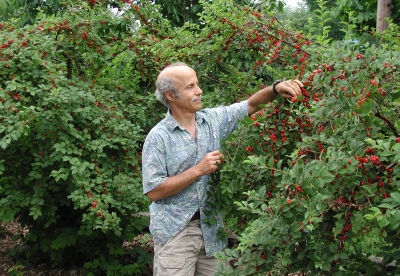
The cherries are small, but are very juicy with a refreshing flavor that combines that of sweet and tart cherries. Another plus for these plants is that they are more or less free of pest problems, requiring no care on my part beyond picking the fruit. Read more about them in my book Landscaping with Fruit.
No need to ignore the bushes until payday because payday is also right now, visually. Along the length of my driveway, the hedge of Nanking cherries has turned into a cloud of dense, slightly pink, white flowers. This time of year it’s not uncommon for a biker or walker to stop and ask the name of the plants. “Nanking cherry!”

Nanking cherry hedge
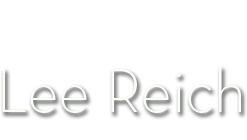
 “Maple decline” is a disease complex brought on by some combination of drought, soil compaction, road salt, root damage, and air pollution. Upper branches are usually the first to go, and once decline begins, secondary fungi and insects speed the process along.
“Maple decline” is a disease complex brought on by some combination of drought, soil compaction, road salt, root damage, and air pollution. Upper branches are usually the first to go, and once decline begins, secondary fungi and insects speed the process along.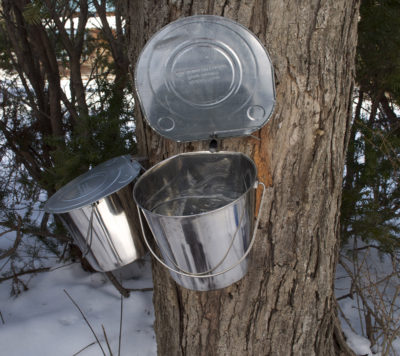
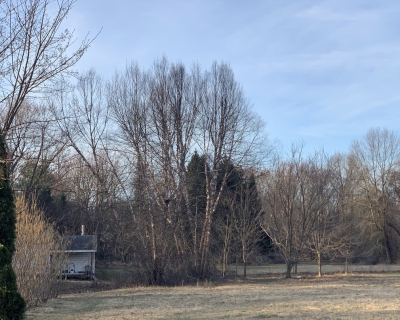
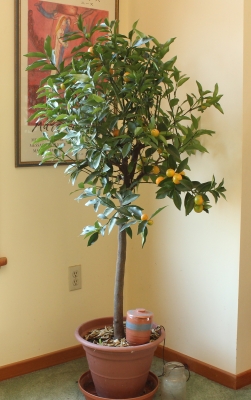


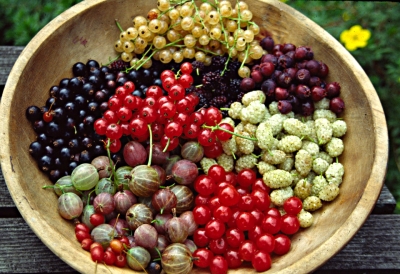
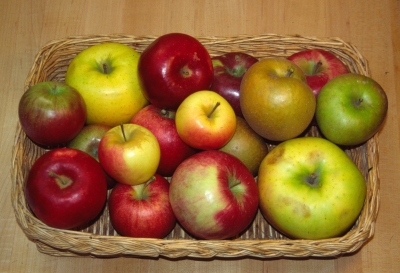


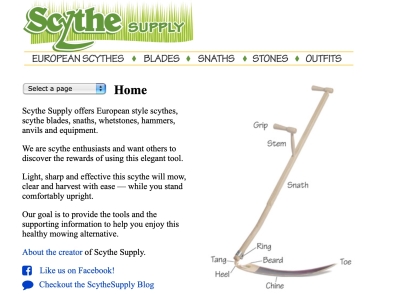
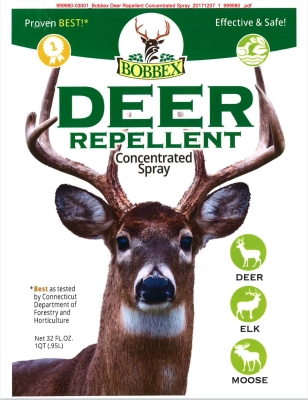
 The one on my garden gate is especially useful in spring and fall, when frosts threaten. As soon as the snow melts, my third
The one on my garden gate is especially useful in spring and fall, when frosts threaten. As soon as the snow melts, my third 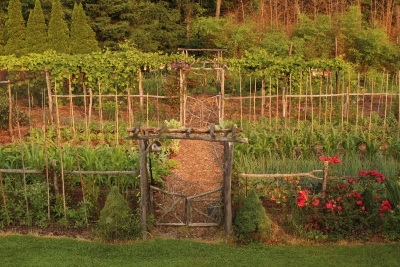

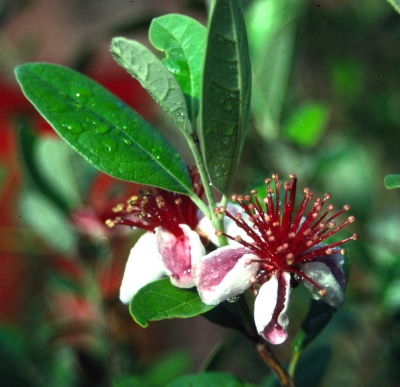


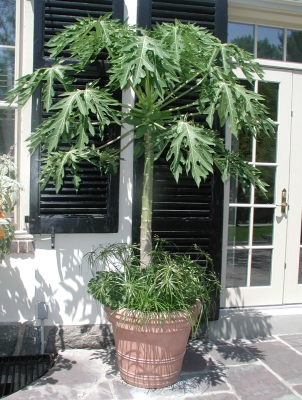

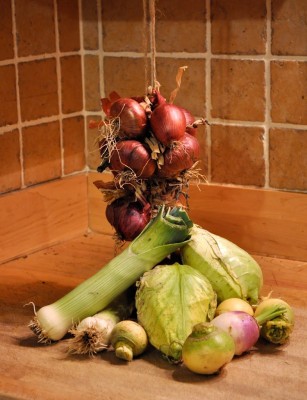 (The cooler is an insulated room cooled with an air conditioner that has been tricked, with a device called
(The cooler is an insulated room cooled with an air conditioner that has been tricked, with a device called 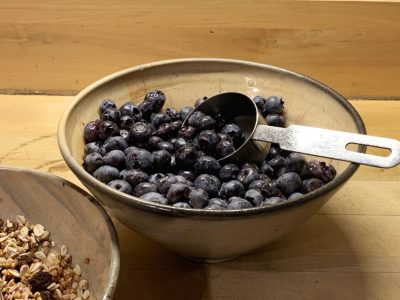
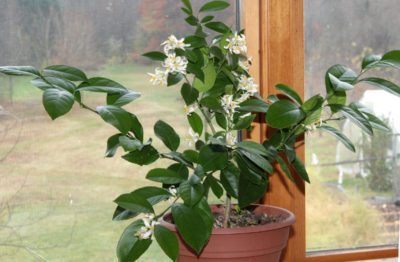
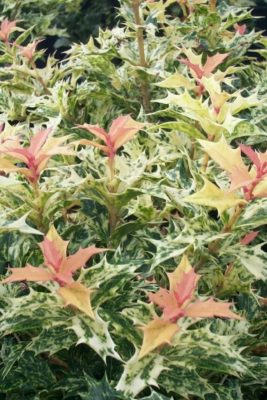
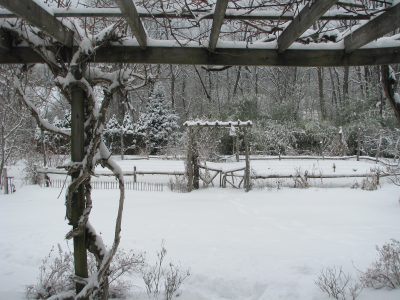
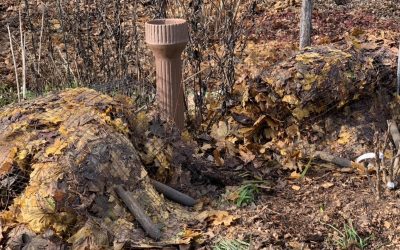 Both kinds of plants are probably cold-hardy to about zero degrees Fahrenheit, but here winter temperatures, except last winter, typically drop to about minus 20 decrees Fahrenheit. That snowy blanket provides extra protection that the plants might need — especially after last Saturday’s unseasonal low of minus 8 degrees.
Both kinds of plants are probably cold-hardy to about zero degrees Fahrenheit, but here winter temperatures, except last winter, typically drop to about minus 20 decrees Fahrenheit. That snowy blanket provides extra protection that the plants might need — especially after last Saturday’s unseasonal low of minus 8 degrees.

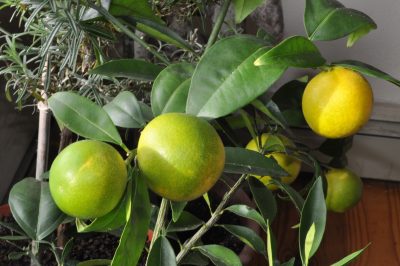
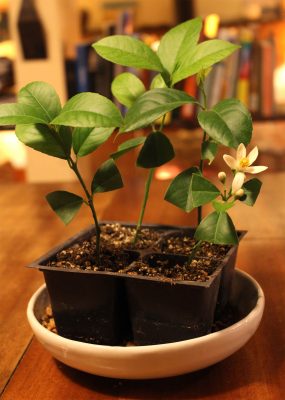
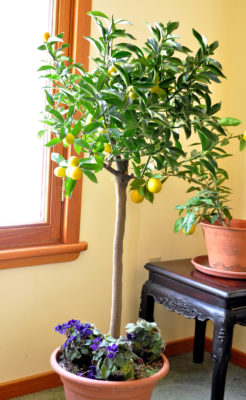
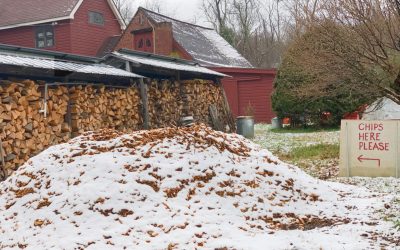 I figured I could spread it on the ground beneath some of my trees and shrubs, especially the youngest ones. There, next summer, the mulch would keep weeds at bay, slow evaporation of water from the ground, and feed soil life, in so doing enriching the soil with nutrients and organic matter.
I figured I could spread it on the ground beneath some of my trees and shrubs, especially the youngest ones. There, next summer, the mulch would keep weeds at bay, slow evaporation of water from the ground, and feed soil life, in so doing enriching the soil with nutrients and organic matter.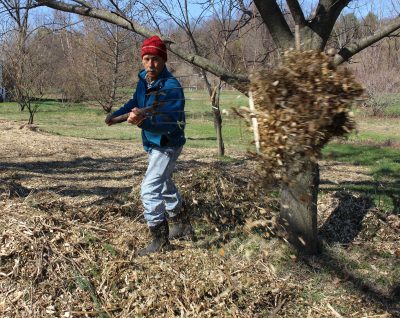 Chips there are mostly to suppress weeds which thrived with last season’s unusually abundant rainfall and to soften, by spreading out, the impact of footfall on the paths. I generally “chip the paths” every couple of years at a minimum if for nothing more so that the height of the paths keeps up with the rising height of the vegetable beds which get — and already got, at the end of this season — a one-inch deep blanket of compost annually. (Besides the usual benefits of mulches, the compost provides enough nutrients for the intensively planted vegetables for the whole season. No fertilizer per se is needed.)
Chips there are mostly to suppress weeds which thrived with last season’s unusually abundant rainfall and to soften, by spreading out, the impact of footfall on the paths. I generally “chip the paths” every couple of years at a minimum if for nothing more so that the height of the paths keeps up with the rising height of the vegetable beds which get — and already got, at the end of this season — a one-inch deep blanket of compost annually. (Besides the usual benefits of mulches, the compost provides enough nutrients for the intensively planted vegetables for the whole season. No fertilizer per se is needed.) Like the stems of any other plant, a strawberry stem each year grows longer from its tip and also grows side shoots. So a strawberry stem rises ever so slowly higher up out of the soil each year.
Like the stems of any other plant, a strawberry stem each year grows longer from its tip and also grows side shoots. So a strawberry stem rises ever so slowly higher up out of the soil each year.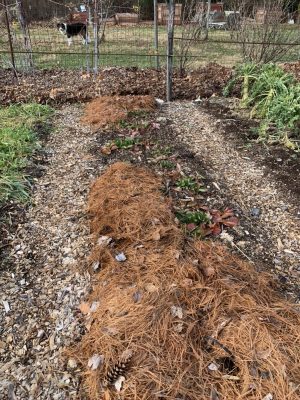 Mulching too early might cause the stems to rot. I typically wait until the ground has frozen about an inch deep which usually occurs towards the end of December here, and then cover the plants with about an inch depth of wood shavings.
Mulching too early might cause the stems to rot. I typically wait until the ground has frozen about an inch deep which usually occurs towards the end of December here, and then cover the plants with about an inch depth of wood shavings.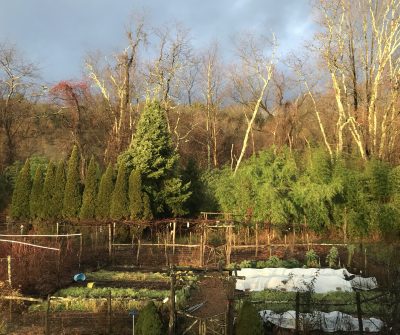
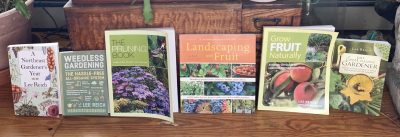
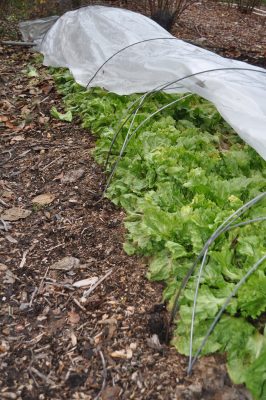
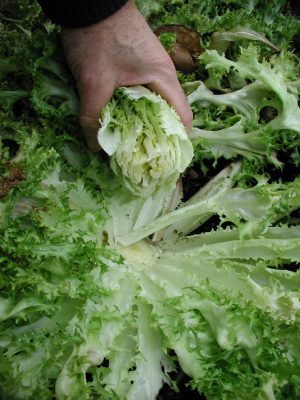 Only the slightest hint of bitterness remains, enough to make the taste more lively — delicious in salads, soups, and sandwiches.
Only the slightest hint of bitterness remains, enough to make the taste more lively — delicious in salads, soups, and sandwiches.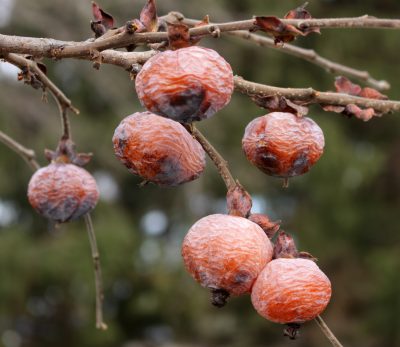
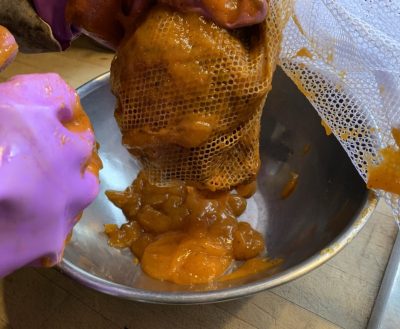 the pulp without seeds. No sweetener needed. Just jar it up and refrigerate (keeps about 2 weeks) or freeze. Delicious.
the pulp without seeds. No sweetener needed. Just jar it up and refrigerate (keeps about 2 weeks) or freeze. Delicious.
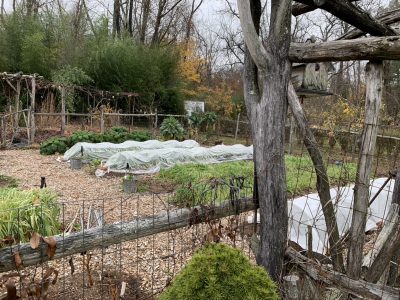

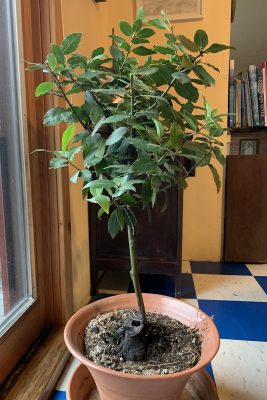
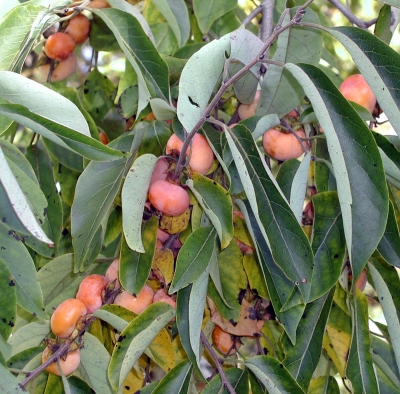
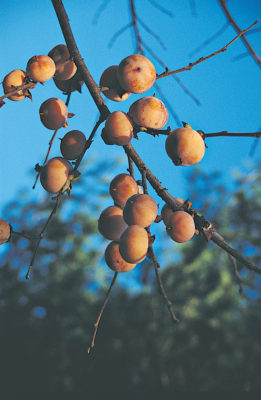

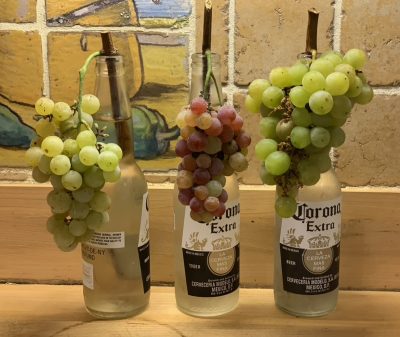
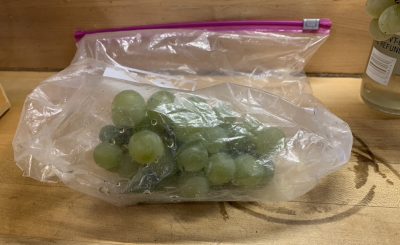 If any of this worked out, the plan was to use either the old-fashioned or modern method with a whole bunch of bunches in my walk-in, insulated and with some cooling or heating, as needed, fruit and vegetable storage room.
If any of this worked out, the plan was to use either the old-fashioned or modern method with a whole bunch of bunches in my walk-in, insulated and with some cooling or heating, as needed, fruit and vegetable storage room.
